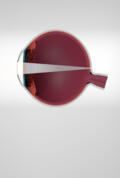
Hyperopia
Farsightedness
A condition where nearby objects
appear blurred while objects further
away to you are sharp and clear.

Hyperopia
Farsightedness
A condition where nearby objects
appear blurred while objects further
away to you are sharp and clear.

Hyperopia
Farsightedness
A condition where nearby objects
appear blurred while objects further
away to you are sharp and clear.
What Is Hyperopia?
Hyperopia, also called farsightedness, is a common vision problem where you can see things clearly far away, but nearby objects look blurry. It can make tasks like reading or writing uncomfortable, often causing eye strain or headaches.
Luckily, hyperopia can be easily managed with glasses, contact lenses or laser treatments to help you see clearly again.
Ziemer Hyperopia Solutions
As the Swiss leader in advanced low energy femtosecond laser technology, Ziemer has developed LASIK Suprato correct hyperopia. This procedure reshapes the cornea with precision, ensuring faster recovery and improved vision.
Treatment Options


This method involves creating a thin corneal flap, followed by precise reshaping of the underlying corneal tissue using a laser. It is a trusted option for correcting hyperopia and improving overall vision clarity.
What are the common symptoms of farsightedness?

Difficulty focusing on close objects
Eye strain or headaches after reading or close work
Straining your eyes
What causes farsightedness?

Shortened Eyeball: The eye is too short, causing light to focus behind the retina.
Abnormal Cornea or Lens Curvature: The eye does not bend light properly, making close objects appear blurry.
Genetic Predisposition: Farsightedness often runs in families.
Aging Process (Presbyopia): The lens loses flexibility as you get older.
Eye Conditions or Injuries: Rare but possible contributors.
What is the ideal age for hyperopia corrective eye surgery?

The ideal age range for laser eye surgery, such as LASIK Supra, to correct hyperopia is generally between 25 and 40 years old.
- Stable Vision: By the age of 25, most people's vision has stabilized, meaning their prescription hasn't changed significantly for at least a year. This stability is crucial for the success of the surgery.
- Age-Related Changes: Before the age of 25, vision can still be changing, and after 40, age-related conditions like presbyopia (difficulty seeing close objects) can start to develop.
However, the minimum age for corrective eye surgery is typically 18 years old, provided the individual's prescription has been stable.
It's always best to consult with an eye doctor to determine the most suitable time for the procedure based on personal eye health and vision stability.
How is hyperopia treated?

Your doctor will do a full diagnostic analysis of your eye prior to recommending any eye procedures. Doctors have a range of values they must consider to fully understand the unique nature of your eye prior to recommending Z-LASIK.
Ultimately your doctor will be your source of guidance to the treatment that is right for you.






